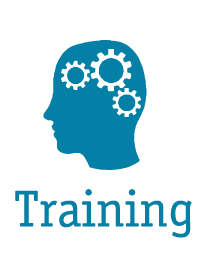ATC Upcoming Events
| Date | Title | Type | Registration and More Information |
| May 14, 2025 12:00 pm PT/ 3:00 pm ET |
Post-Earthquake Investigations: Coordination, Collaboration, and Participation in NEHRP Activations (USGS Circular 1542) |
ATC Webinar | Register Now Order PDH Certificate |
| Fall 2025 | Structural Design for Coastal Flood Resilience: Findings and Recommendations from Workshop Organized by ATC, Princeton University and NSF (ATC-164) |
ATC Webinar | TBD |
- Subscribe to the ATC Mailing List to receive the latest updates on our events and organization.
- Visit the ATC Training page to learn about hosting an ATC-20, ATC-45 or other in-person and web-based trainings.
- Check out our FEMA NETAP Training page for additional training opportunities.
Other Upcoming Events
| Date | Title | Type | Registration and More Information |
|
May 3, 2025 |
ATC-20 SAP Evaluator Training |
In Person |
|
| Sep. 15-19, 2025 |
19th World Conference on Seismic Isolation, Energy Dissipation and Active Vibration Control of Structures |
In Person | Registration |
ATC Past Events
| Date | Title | Presenter(s) | Type |
| Feb. 26. 2025 | Benchmarking ASCE/SEI 41-17 Evaluation Methodologies for Existing Reinforced Concrete Buildings | Russell Berkowitz | |
| Feb. 5, 2025 | FEMA P-1026, Seismic Design of Rigid Wall-Flexible Diaphragm Buildings: An Alternative Procedure | Dominic Kelly | |
|
Dec. 11, 2024 |
Recommendations Related to Concrete Structural Walls in FEMA P-2208, NEHRP Recommended Revisions to |
Garrett Hagen | |
| Nov. 20, 2024 | Recommendations Related to Unreinforced Masonry in FEMA P-2208, NEHRP Recommended Revisions to ASCE/SEI 41-17 | Rebecca Collins | |
| Sep. 18, 2024 | Recommendations Related to Nonlinear Analysis in FEMA P-2208, NEHRP Recommended Revisions to ASCE/SEI 41-17 |
Robert Pekelnicky |
|
| Apr. 3, 2024 | Improving Performance of Buildings in Very High-Seismic Regions (FEMA P-2343) |
Charles Kircher |
Webinar Download Reports Q&A Download PDF Presentation Recording |
| Feb. 28, 2024 | FEMA P-807-1, Guidance and Recommendations for the Seismic Evaluation and Retrofit of Multi-unit Wood-frame Buildings with Weak First Stories |
David Mar |
Webinar Q&A Downloads/Recording |
| Dec. 8, 2023 | ATC at 50: Celebrating the Past, Engaging the Present, and Envisioning the Future | In-Person | |
| Jul. 25, 2023 | FEMA P-2012, Assessing Seismic Performance of Buildings with Configuration Irregularities | Mike Valley | Webinar Downloads/Recording |
| Feb. 15, 2023 | Part B: The Seismic Design Process for New Buildings Earthquake-Resistant Design Concepts (FEMA P-749) | Ron Hamburger |
Webinar Downloads/Recording |
| Feb. 8, 2023 | Part A: The Basic Concepts of Earthquake-Resistant Design and an Introduction to U.S. Seismic Regulations Earthquake-Resistant Design Concepts (FEMA P-749) | Mike Griffin |
Webinar Downloads/Recording |
| Dec. 14, 2022 | Nonlinear Structural Analysis for Seismic Performance Assessment and Design of Buildings | Greg Deierlein | ATC Webinar |
| Dec. 5-7, 2022 | Fifth International Workshop on Seismic Performance of Non-Structural Elements (SPONSE) | Varies | In-Person Workshop Download Proceedings |
| Nov. 4, 2022 | FEMA P-1026, Seismic Design of Rigid Wall-Flexible Diaphragm Buildings: An Alternative Procedure | Dominic Kelly | Webinar Downloads/Recording |
| Aug. 31, 2022 | FEMA P-2018, Seismic Evaluation of Older Concrete Buildings for Collapse Potential, | Bill Holmes Abbie Liel |
Webinar Downloads/Recording |
| Aug. 3, 2022 | Future Code Changes Explained—Seismic Analysis and Design of Nonstructural Components and Systems | Maryann Phipps Bret Lizundia |
ATC Webinar |
| June 15, 2022 | FEMA P-2091, A Practical Guide to Soil-Structure Interaction | Bret Lizundia | Webinar |
| Apr. 26, 2022 | FEMA P-2139, Short-Period Building Collapse Performance and Recommendations for Improving Seismic Design | Charlie Kircher Kelly Cobeen |
Webinar |
| Feb. 9, 2022 | ASCE 41 Design Examples (FEMA P-2006) | Ron LaPlante | Webinar |
| Nov. 17, 2021 | ATC Design Guide 3, Serviceability Design of Tall Buildings Under Wind Loads | Chris Letchford, Bill Baker, Lawrence G. Griffis, Peter Irwin |
ATC Webinar |
| Sep. 1, 2021 | Reducing Earthquake Risk in the Classroom and Beyond | Maryann Phipps Sarah Durphy | Webinar |
| Jul. 1, 2021 | Seismic Evaluation of Older Concrete Buildings for Collapse Potential (FEMA P-2018) | Bill Holmes Abbie Liel |
Webinar |
| Jun. 2, 2021 | ATC Design Guide 2, Basic Wind Engineering for Low-Rise Buildings | Bill Coulbourne | ATC Webinar |
| Mar. 31, 2021 | Introduction to ASCE/SEI 41, Seismic Evaluation and Retrofit of Existing Buildings | Bret Lizundia | Webinar |
| Jan. 27, 2021 | Improving Earthquake Performance of Manufactured Homes | Kelly Cobeen | Webinar |
| Dec. 16, 2020 | NEHRP Technical Brief No. 12, Seismic Design of Cold-Formed Steel Lateral Load-Resisting Systems – A Guide for Practicing Engineers | Rob Madsen Justin Moresco |
ATC Webinar |
| Sept. 23, 2020 | Post-disaster Building Safety Evaluation Guidance (FEMA P-2055) | Bret Lizundia Ayse Hortacsu |
Free NETAP* Webinar |
| Jun. 10, 2020 | Reducing the Risks of Nonstructural Earthquake Damage—A Practical Guide, Fourth Edition (FEMA E-74) | Ed Huston | Free NETAP* Webinar |
| Mar. 19, 2020 | Introduction to ASCE/SEI 41, Seismic Evaluation and Retrofit of Existing Buildings (FEMA P-2006) | Bret Lizundia | Free NETAP* Webinar |
| Dec. 12, 2019 | Incremental Seismic Rehabilitation of School Buildings (K-12) (FEMA 395) | Mike Griffin | Free NETAP* Webinar |
| Sep. 12, 2019 | Earthquakes and Safer, Stronger, Smarter: A Guide to Improving School Natural Hazard Safety (FEMA P-1000) | Lori Peek Jason Ballman Jill Barnes Ted Wolf |
Free NETAP* Webinar |
| Aug. 28, 2019 | FEMA P-58 In-Person Training Seminar: Seismic Performance Assessment of Buildings, Methodology and Implementation | Ron Hamburger, Curt Haselton, Jon Heintz, John Hooper, Mike Mahoney, Ron Mayes, Vesna Terzic |
In-Person Training |
| Jun. 12, 2019 | FEMA P-50 and FEMA P-50-1, Simplified Seismic Assessment and Retrofit Guidelines for Detached, Single-Family, Wood-Frame Dwellings | Kelly Cobeen | Free NETAP* Webinar |
| Mar. 27, 2019 | Improving Earthquake Performance of Manufactured Homes | Kelly Cobeen | Free NETAP* Webinar |
| Mar. 13 & 20, 2019 | 2019 Spring Seminar: FEMA P-2006 - ASCE 41 Design Examples | Bret Lizundia, Brian McDonald, Mark Moore, Ron LaPlante, Mike Braund |
In-Person Training |
| Mar. 7, 2019 | Post-earthquake Response and Recovery plenary workshop presented by Bret Lizundia, Rutherford + Chekene, ATC Project Technical Director DRRA 1241 (ATC-137-2) Project | Bret Lizundia | Plenary Workshop |
| Mar. 7, 2019 | Post-earthquake Response and Recovery technical session presented by Ayse Hortacsu, ATC Director of Projects | Ayse Hortacsu | Technical Session |
| Mar. 5, 2019 | Introduction to FEMA P-2006: Example Application Guide for ASCE/SEI 41-13 Seismic Evaluation and Retrofit of Existing Buildings with Additional Commentary for ASCE/SEI 41-17 | Bret Lizundia, Ron LaPlante |
In-Person Training |
| Nov. 29, 2018 | FEMA P-58 Training in Seattle | Ron Hamburger, Jon Heintz, John Hooper, Vesna Terzic |
In-Person Training |
| Nov. 12-14, 2018 | 17th U.S.-Japan-New Zealand Workshop on the Improvement of Structural Engineering and Resilience | See more | In-Person Workshop |
| Sep. 6, 2018 | Safer, Stronger, Smarter: A Guide to Improving School Natural Hazard Safety (FEMA P-1000) | Lori Peek | Free NETAP* Webinar |
| Jun. 6, 2018 | Building Codes - Why they Matter | Mike Griffin | Free NETAP* Webinar |
| Apr. 25, 2018 | Seismic Evaluation and Retrofit of Multi-Unit Wood-Frame Buildings with Weak First Stories (FEMA P-807) | David Mar, Mike Korolyk |
Free NETAP* Webinar |
| Mar. 7, 2018 | Reducing the Risks of Nonstructural Earthquake Damage - A Practical Guide (FEMA E-74) | Mike Griffin | Free NETAP* Webinar |
About *NETAP. Instructor services and expenses for these trainings are funded by the Federal Emergency Management Agency (FEMA) National Earthquake Technical Assistance Program (NETAP), which is a mechanism for delivering direct assistance to the public to increase their knowledge and ability to analyze their risk, make a plan, and take actions aimed at reducing their earthquake risk and supporting overall community resilience. NETAP is a program managed by FEMA to rapidly deploy training and technical assistance to organizations and communities.







 Michael Valley
Michael Valley